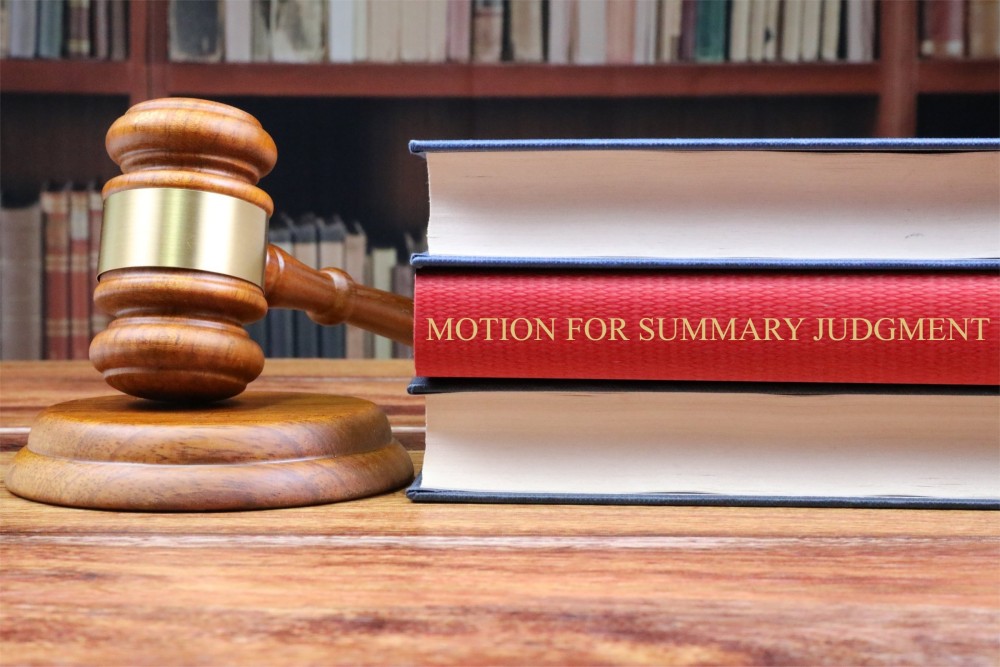Get Your Legal Documents Now!
Whether you are dealing with a complex family matter, facing criminal charges, or navigating the intricacies of business law, our mission is to provide you with comprehensive, compassionate, and expert legal guidance.

A motion for summary judgment is one of the most powerful tools in a litigator’s arsenal. It allows a party—typically the defendant—to ask the court to resolve a case or specific claims without the need for a full trial. Summary judgment is appropriate when there are no genuine disputes of material fact and the moving party is entitled to judgment as a matter of law.
How to Win a Motion for Summary Judgment: Best Strategies for Success
Introduction
A motion for summary judgment is one of the most powerful tools in a litigator’s arsenal. It allows a party—typically the defendant—to ask the court to resolve a case or specific claims without the need for a full trial. Summary judgment is appropriate when there are no genuine disputes of material fact and the moving party is entitled to judgment as a matter of law.
Winning a motion for summary judgment can save significant time, money, and stress by bringing a swift conclusion to a lawsuit. But success isn’t automatic. You need to build a strategic, well-supported, and persuasive argument. In this blog, we’ll break down the best strategies to win a motion for summary judgment—from gathering evidence to structuring your motion effectively.
If you’re ready to file a summary judgment motion or respond to one, Legal Husk offers professional legal document drafting services to help you strengthen your case.
What Is a Motion for Summary Judgment?
A motion for summary judgment (MSJ) asks the court to rule on all or part of a case without proceeding to trial. It is typically filed after discovery, when both parties have collected enough evidence to evaluate the case’s strength.
The standard is high: the moving party must show that there is no dispute over any material fact and that they are entitled to judgment as a matter of law. The court will view the evidence in the light most favorable to the non-moving party, so the motion must be clear, compelling, and airtight.
1. Know When to File
Timing is everything in litigation. A motion for summary judgment is most effective when:
Filing too early can result in a denial due to insufficient discovery. Filing too late can mean missing your chance.
2. Build a Solid Factual Record
Courts require evidence—not just arguments—in a motion for summary judgment. That means you must:
Your motion should present a coherent narrative supported by undisputed facts. Include a statement of material facts that lays out each key fact with pinpoint citations.
3. Frame the Legal Issues Clearly
The judge must understand the legal basis for your motion immediately. That means:
Once the legal framework is established, show how the evidence you’ve submitted either negates an essential element of the opposing party’s case or proves every element of your own.
4. Attack Weaknesses in the Opposing Party’s Case
An effective motion for summary judgment doesn’t just prove your case—it shows why the opposing party’s case cannot survive. Focus on:
Make it clear that even if all reasonable inferences are drawn in their favor, their claim still cannot stand.
5. Structure Your Motion for Maximum Impact
Judges appreciate motions that are easy to follow. Organize your motion as follows:
Use headings, bullet points, and short paragraphs to improve readability.
6. Anticipate the Opposition
Every motion for summary judgment will face a response. Strengthen your motion by anticipating:
The more thoroughly you prepare, the harder it will be for the opposition to raise doubt.
7. Follow Court Rules to the Letter
Summary judgment motions are governed by detailed procedural rules. You must:
Failure to comply can result in automatic denial, regardless of how strong your argument is.
8. Be Selective: Focus on Winnable Issues
You don’t have to win on every claim. Target the claims most vulnerable to dismissal—those lacking evidence or based on flawed legal theories. This:
Winning partial summary judgment can still be a huge strategic victory.
What Happens If You Win?
If the court grants your motion, the case (or specific claims) ends without trial. You’ve saved your client months of litigation, trial costs, and uncertainty.
If the motion is partially granted, the case is streamlined, and your position is stronger going into trial or settlement discussions.
What Happens If You Lose?
A denial doesn’t mean you’ve lost the case—it means the court believes a jury must decide certain issues. Still, the failed motion may:
Let Legal Husk Draft Your Summary Judgment Motion
At Legal Husk, we specialize in drafting high-impact motions for summary judgment that are factually accurate, legally sound, and strategically structured. Our team ensures:
You can purchase our professional drafting services directly from Legal Husk and get the support you need to present a winning summary judgment motion.
Final Thoughts
Winning a motion for summary judgment requires more than just good law—it takes strategy, organization, and precise execution. By building a strong factual record, identifying legal weaknesses, and structuring your motion clearly, you dramatically increase your odds of success.
If you're preparing a summary judgment motion or need help defending against one, Legal Husk is here to support you every step of the way.
📩 Contact Legal Husk today to purchase professionally drafted legal documents and strengthen your litigation strategy.
Whether you are dealing with a complex family matter, facing criminal charges, or navigating the intricacies of business law, our mission is to provide you with comprehensive, compassionate, and expert legal guidance.
Comments